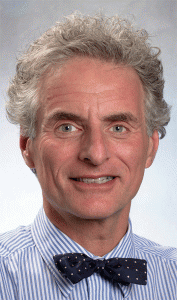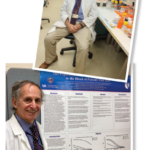Without a background in art or design, Dr. Pisetsky found it both a challenge and a thrill to work on the aesthetic presentation of articles and graphics for the publication.
“Illustrating articles is hard,” notes Dr. Pisetsky, and literally millions of available images exist that can be used for any given topic. The editorial staff was charged with the task of selecting the best images and graphics. Dr. Pisetsky had several goals with regard to illustrating articles, including making the layout and visual representation engaging, avoiding repetition of images and giving each article a wow factor. He would sometimes spend one or two hours looking at potential graphics for each major article. The process was sometimes tedious and difficult, but Dr. Pisetsky recalls it as a labor of love that allowed him to be creative and collaborate with the editorial and graphics staff.
In addition to being proud of the illustrative presentation of the publication, Dr. Pisetsky also enjoyed the opportunity to write a monthly column on a topic of his choice. “It was a very different way to look at the world,” he says. He frequently found himself—in the office, at Grand Rounds, on family outings—thinking about what would make for a good column. He enjoyed being both thoughtful and humorous, seeking to find topics that were thought provoking but also allowed readers to see the somewhat comical and joyous aspects that make medicine fun.
Moving the Legacy Forward

Dr. Helfgott
After Dr. Pisetsky’s five-year tenure as physician editor of TR came to a close at the end of 2011, he was succeeded by Simon M. Helfgott, MD, associate professor of medicine, Division of Rheumatology and Immunology, Harvard Medical School, Boston. Dr. Helfgott had been an avid reader of TR since its inception and he loved that the ACR had thought to create a clinically oriented publication that would provide first-rate discussions of topics germane to clinicians.
Dr. Helfgott explains that, when he started his tenure as physician editor in 2012, his top priority was to create issues full of well-written pieces that touched on topics near and dear to the hearts of all members of the rheumatology community. Initially, most readers expected to receive these articles via hard copies of the publication through U.S. mail, but by the end of his tenure, the focus had shifted and the articles were also being made available via the web.


